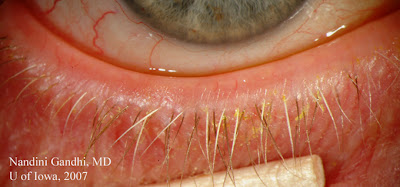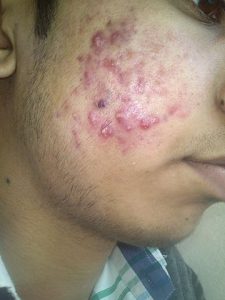
Rhinophyma is an advanced, chronic skin disorder that affects the nose. The disorder is usually seen in people who have rosy or pink cheeks, a red rash that can appear on the cheeks and nose (especially on the cheeks), and those with facial eczema.
Some of the most common symptoms are itching and burning around the nose, facial swelling and discharge. There may also be some breathing discomfort and coldness in the limbs. This condition can also be accompanied by severe coughing, sneezing, and feeling tired.
Rhinophyma can be caused by a number of factors. There may be a history of allergies to certain chemicals, such as paint thinners and some medications that cause the condition. The most common cause is accumulation of sebum in the nose. This oil provides comfort to the skin, however, if the oils are not exfoliated from the surface of the skin, they can enter the skin and cause disease. Other possible causes include pregnancy, environmental exposure, infections, asthma, and steroids.
In people with a history of allergies, exposure to certain irritants can cause inflammation and skin irritation. The body's natural defense system then begins to work against the problem by producing a series of chemicals called histamines, which are the same chemical that triggers the allergic reaction.
If the natural immune system is not functioning properly, the body can overreact and produce excessive levels of histamines. Excessive chemicals in the body can irritate the nasal lining, causing swelling and redness. Once this begins to occur, there is little the person can do other than take antihistamine tablets and avoid situations that could trigger an allergic reaction.
Those who suffer from severe respiratory conditions such as bronchitis and emphysema may find that rhinophyma becomes more painful after treatment. It is therefore important to seek medical attention right at the onset of the condition. Even those who are only slightly affected by the condition should see their doctor as the condition may worsen if left untreated.

The treatment of rhinophyma depends on how severe the condition and how severe the respiratory conditions are. In most cases it is necessary to get the treatment done in one go, although in more severe cases where treatment is needed multiple treatments may be required.
The treatments used for rhinophyma vary according to the severity of the condition. Many people are able to avoid surgery and go straight to the medication, but if the condition is too severe then a course of steroid tablets may be prescribed.
Nasal Sprays The spray, called Flovent, which is used in rhinophyma can be inhaled for about fifteen minutes, or can be sprayed into the nostril. This is designed to soothe and calm the irritated mucous membrane in the nose. Another spray called Nasal Hydropressure which also contains hydrocortisone, is applied to the face and throat to relieve symptoms of rhinophyma. The effect of the spray lasts between twenty minutes to half an hour.
Another option available is the use of a steroid cream. This cream is applied topically to the area of the skin where the symptoms occur. These creams help to alleviate inflammation as well as to reduce the irritation caused by the inflamed mucus.
In extreme cases where rhinophyma has been allowed to get worse, oral medicine may be prescribed which consists of drugs like Flovent and nasal sprays. There are antihistamines and antispasmodics also used in the treatment of rhinophyma.
Antihistamine pills are a form of antihistamine medication that can be taken for short-term treatments. These help to reduce the symptoms of rhinophyma while they are in the digestive process.

